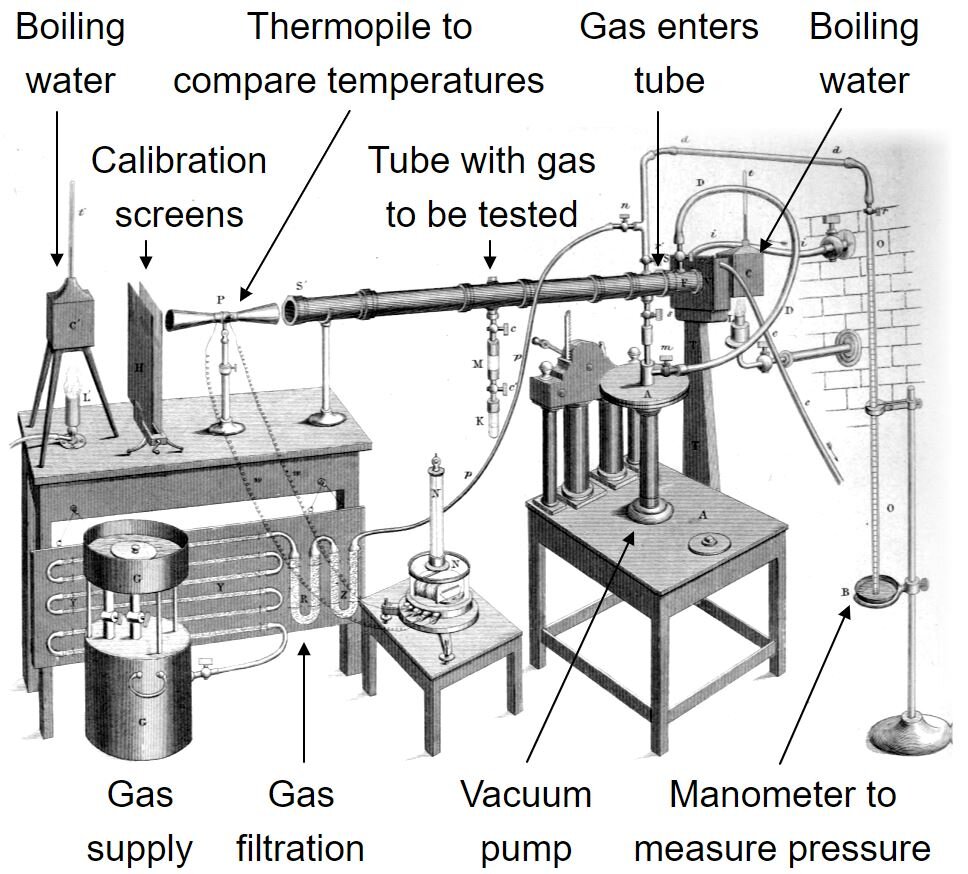Carbon Dioxide and Temperature over 500 million Years
In this post from the book net-zero:
How do scientists measure carbon dioxide from the past? The clever techniques used to reconstruct Earth’s climate.
What was the level of carbon dioxide when dinosaurs roamed the Earth? The unwavering relationship between carbon dioxide and temperature for the last 500 million years.
What caused the past 5 mass extinctions? Earth’s past as a cautionary tale for humanities’ future - mass extinctions and the hubris of humanity.
Recording & Reconstructing a History of the Earth’s Atmosphere
In order to test the theory of global warming, scientists have been able to record and reconstruct the Earth’s past temperature, CO2 concentration, and sea levels, using a range of direct and proxy data. The data shows the historical relationship between CO2 and temperature. It also gives us an insight into our possible climate futures. The data is collected using many different techniques:
Historical: Direct global records date back to 1850 for temperature, 1870 for sea levels, and to 1959 for atmospheric CO2. The data must be carefully vetted for changing measurement techniques, localised disturbances, and natural cyclical variations.
Biological: Proxies include tree rings, pollen, coral, and the fossils of plants, animals, insects and plankton. These samples can be dated using radiometric analysis of unstable isotopes which decay at a known rate. Once the date of the sample is known the temperature can be estimated by measuring the ratio of stable isotopes in the sample which evaporate or condense at different rates to their standard atom equivalents depending on the past temperature.*
Cryological: Ice cores are drilled from ice sheets and glaciers providing trapped bubbles of the past atmosphere as far back as 800,000 years. Ice cores can be dated using the distinct layers of annual snowfall and using unstable isotopes. The CO2 from the atmosphere trapped in tiny bubbles can be measured directly. Temperatures are again inferred from the ratio of stable isotopes of hydrogen or oxygen.
Geological: Various types of rock and sediment can be dated by radioactive decay all the way to the start of life on Earth. The ratio of stable isotopes of carbon, magnesium, lithium, and boron found in the shells of ancient plankton called foraminifera provide temperature and CO2 proxy information that paleo-climatologists can use to reconstruct the climate deep into the geological past.
*Isotopes are atoms that are heavier or lighter than usual due to the number of uncharged neutrons in their core. Unstable isotopes decompose at a known rate. Measure the ratio of remaining isotopes compared to their decay products and the age of the sample can be estimated. Carbon-14 can date back 50,000 years and uranium-235 as far back as 700 million years. // Stable isotopes like oxygen-18 or deuterium weight slightly more than normal oxygen or hydrogen and so will evaporate slower depending on temperature.
The Deep Geological Record of Carbon Dioxide and Temperature
Paleoclimatology is the study of the climate over all of Earth’s history. Reconstructing climate deep in the geological past is still a relatively new branch of climate science and one where the range of estimates continues to show large variation. But the reconstructions of temperature, sea level, and CO2, are continually being refined with ever increasing data and more sophisticated analysis that are allowing us to see deeper into the Earth’s climate past.
A synthesis of hundreds of studies by Ross J Salawitch and his team from the University of Maryland suggest that nearly 400 million years ago carbon dioxide concentrations ran higher than 2,000 ppm and temperatures were more than 10⁰C above today’s average.
Conditions were perfect for the mass expansion of forests across the single super continent, Pangea.
As the forest spread, the deep tree roots likely broke apart the silicate rock, exposing it to the elements and speeding up carbon sequestration through chemical weathering. Levels of carbon dioxide began to fall and temperatures dropped 10⁰C. By 360 million years ago, 70% of all species had been wiped out, unable to adapt to the rapid temperature changes.
Roughly 300 million years ago, global temperatures and CO2 concentrations stabilised, at levels not too dissimilar from today, before once again beginning to climb. The next 250 million years experienced a volatile warming trend as currents in the Earth’s liquid mantle broke apart the supercontinent Pangea, drove increasing volcanic activity, and released CO2 and methane into the atmosphere. Through the early temperature increases, up to 90% of all sea creatures and 65% of land creatures were driven to extinction. The dinosaurs emerged as the dominant species on Earth.
Carbon Dioxide concentrations peaked at over 1,000 ppm around 50 million years ago, with temperatures over 10⁰C warmer than today. The next 50 million years are characterised by a gradually cooling planet as volcanic activity slowed. The Antarctic ice sheets formed 30 million years ago and Greenland glaciation took place 3 million years ago. The evolution of our early ancestor Homo habilus, “the handy man”, followed soon after, before Homo erectus, “the upright man”, first appeared nearly 2 million years before today.
Earth’s Past is a Cautionary Tale for Humanities’ Future
The record of rock and ice is both a complex tapestry of the flourishing life on Planet Earth and at the same time a reminder of the extreme vulnerability of species over geological time. The records show five mass extinction events over the last 500 million years, each of which wiped out over three quarters of all species on the planet and each one caused by rapid changes to the Earth’s climate.
The Ordovician-silurian extinction 440 million years ago wiped out most small marine organisms as the planet rapidly cooled and iced over before once again thawing. The Devonian extinction, 365 million years ago, destroyed many tropical marine species as Earth cooled, sea levels dropped, and the oceans ran low on oxygen.
The Great Dying, 252 million years ago, was Earth’s most severe extinction: rapid warming was caused by volcanic activity spewing CO2 into the atmosphere and the sudden release of methane from the sea floor. Ocean waters at the equator rose to hot tub temperatures, seas became starved of oxygen, and 96% of all marine life plus over 70% of terrestrial life was obliterated.
The last major extinction was 65 million years ago when an asteroid struck the Gulf of Mexico, vaporising rock into atmospheric aerosol, blocking the sun, and rapidly cooling the planet. The asteroid-induced climate change decimated food chains, wiped out the dinosaurs, and ushered in a new age of mammals.
Humanity has taken full advantage of the recent stable climate but, to think of our survival as guaranteed is, at best, short term thinking or misplaced hubris.
We have existed as a species less than 3 million years: that’s 0.06% of the planet’s life, 0.6% of the time of trees, and represents just 2% of the length of time the dinosaurs roamed the Earth. We have a long way to go.
Burning the full 10,000 billion tonnes of fossil fuel carbon left on the planet over the next few centuries would take atmospheric CO2 concentrations towards the highest levels recorded in 500 million years of the Earth’s history, temperatures would rise over ~10⁰C warmer, and we would experience climate conditions last encountered over 50 million years ago.
Unless we leave the majority of fossil fuel resources buried underground we are set to create a planet better suited for cold blooded reptiles than for human inhabitants.
Click to find out more about How Humans are Destabilising the Earth & the Choices We Have to Solve Climate Change
Want to take action and help fight climate change - find more resources in Climate Action


































